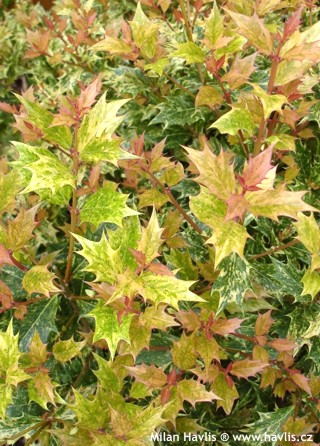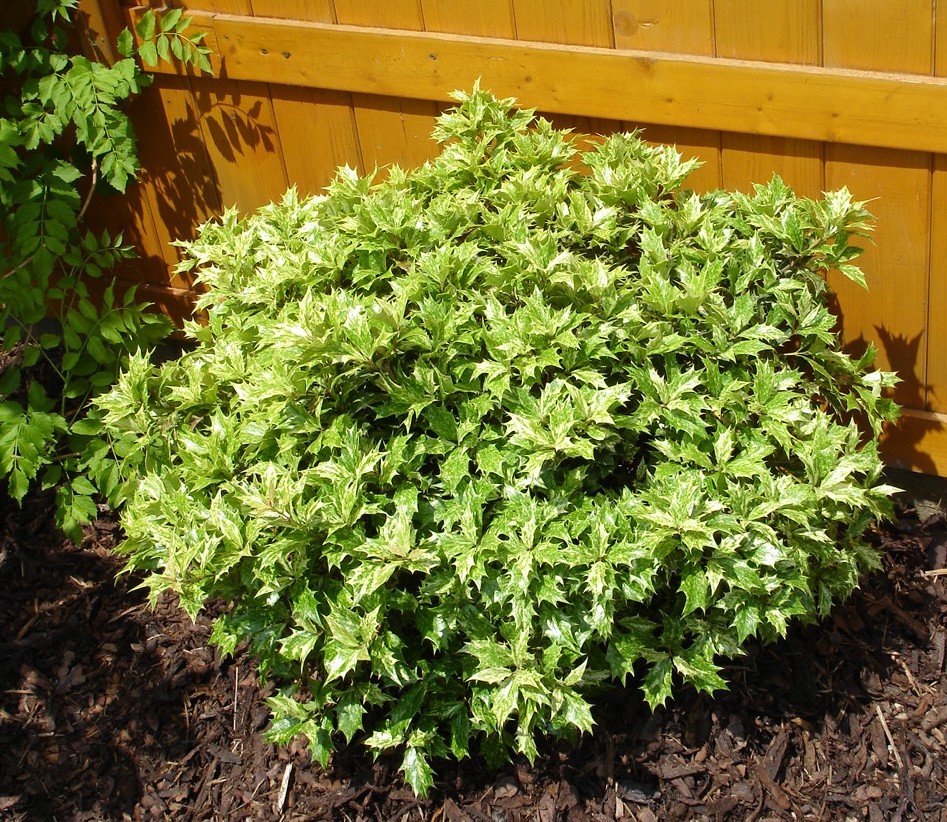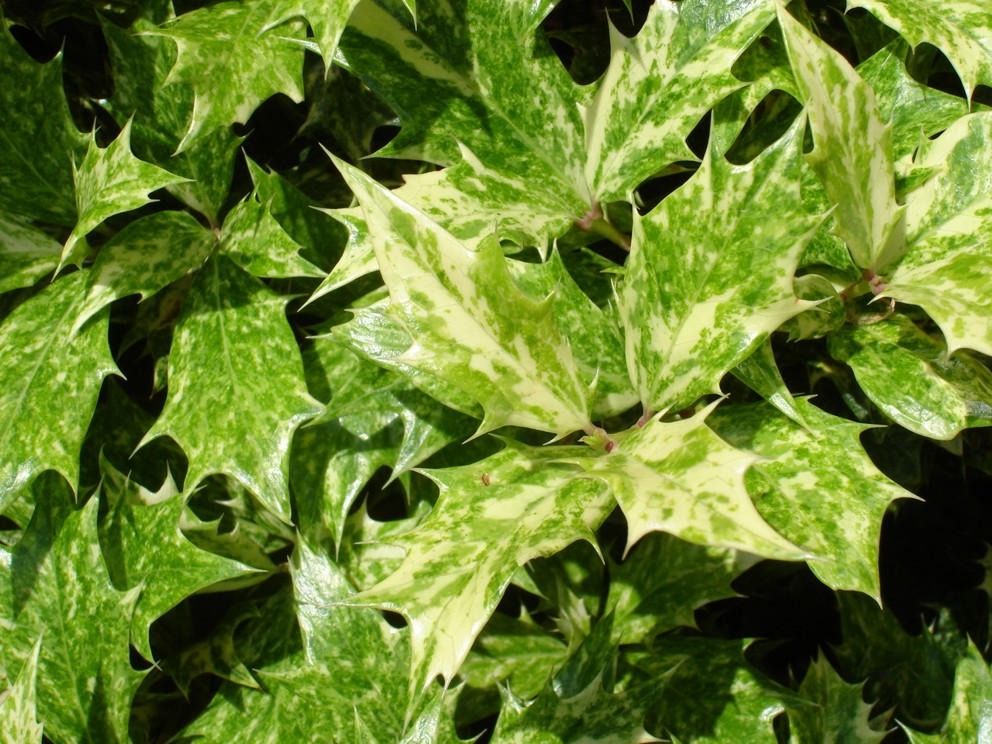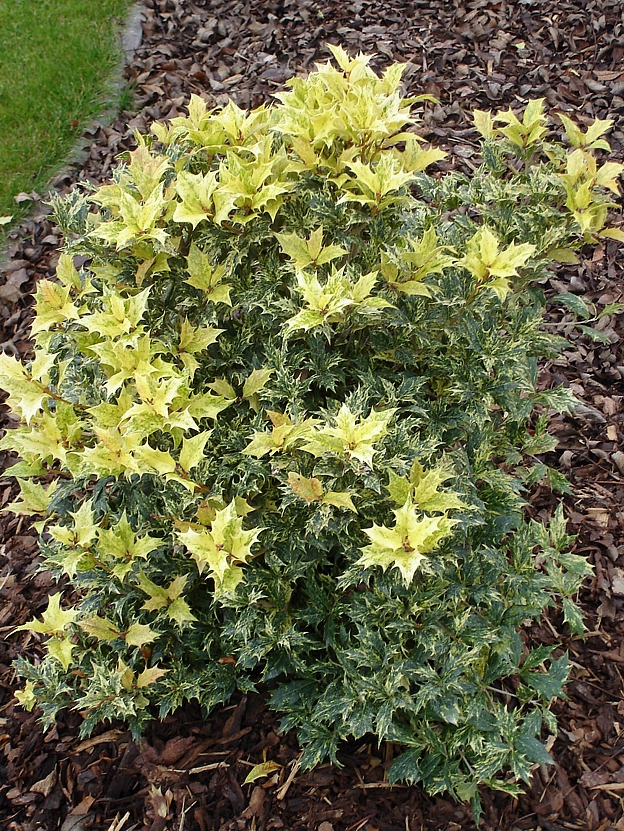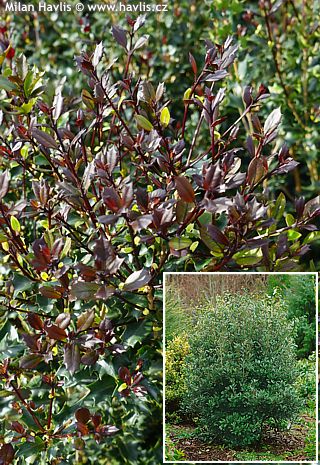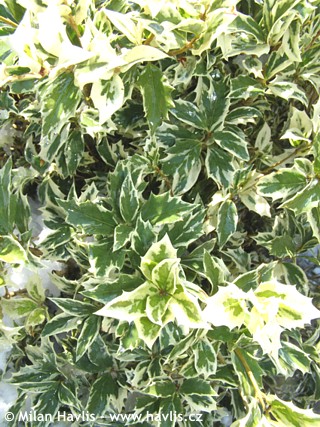Osmanthus heterophyllus (var. tricolor) 'GOSHIKI' holly osmanthus


Osmanthus
Osmanthus is a genus of only about 15-20 evergreen species and varieties, and a genus which I fell in love with the first time I saw a few plants of. Holly osmanthus or false holly is a taxon of evergreen shrubs and small trees native to East Asia, southern Japan, and Taiwan. It bears evergreen and usually thorny leaves which resemble hollies, but something seems to be wrong for the more experienced eye: holly leaves are alternate while osmanthus leaves are opposite.Goshiki osmanthus bears evergreen, conspicuously mottled, spiny foliage. Newly emerging leaves are bronze to purple, young leaves are light vanilla yellow with a fine green pattern, and mature leaves show dark green and creamy yellow marbling from summer onwards. The more sun it gets in the summer the more distinctly coloured it will be.
Although it can grow up to 3 meters in its natural habitat, it grows very slowly and its common size in Central European conditions is around 1.5 m in height and spread. It does not require pruning but it tolerates it very well, even in old wood, so you can shape it as you like. Spring pruning enhances branching, summer trimming is great for shaping. The twigs and bark are light gray and smooth. We haven't seen any flowers on it yet.
Spiny-leaved osmanthus have long been used as a natural barrier against wild animals and cattle. Another important advantage is that they are long-lived shrubs or trees, and we are not talking about decades but hundreds of years. There are records of specimens whose age was estimated to 950 or more years. In other words, if located in an ideal spot it can be a plant that will be passed on by one generation to another. It looks great as an attractive evergreen specimen shrub or small tree, and does a good job as a hedge, too.
Grow osmanthus in moist but well-drained, humus rich, preferably acidic soil. Provide plenty of mulch for winter to protect the roots from fast freezing. It loves full sun but in colder regions find it a location sheltered from late winter and early spring sunlight but with plenty of light during the growing season. Use only plants with mature wood in zone 6 and transplant it no later than late summer in order to avoid frost damage after the first winter. Goshiki is a great performer when it comes to hardiness and has proved tolerance to at least -25 °C (USDA zone 6) without damage after 20 years of cultivation in more C.E. locations. It does not suffer from diseases, but vine weevil can be a problem. Drought tolerant.
Last update 08-02-2009; 01-09-2022
Goods are shipped all over Europe. For Russia and U.K. and for further details please read about SHIPPING OPTIONS HERE.
Are you interested in a serious discount for orders NOV-FEB? Check your options here.
THE PRICES INCLUDE VAT of 15%. For quick conversion you can use 1 CZK = approx. 0.04 EUR
- STANDARD QUALITY - Plants of this group are 1st class quality with number of branches and overall density adequate to their size and age, considering they were container grown.
- DE LUXE QUALITY - This label guarantees a luxurious quality of manually selected plants that, compared to their height and age, are exceptionally dense and beautiful.
- EXTRA - These plants are usually mature and bigger specimens with exceptional overall appearance.
- STANDARD (as described in the plant form) means a tree with a trunk of 190-210 cm and a crown at the top, unless specified differently. The commercial size for trees is their girth measured in the height of 1m from ground.
- HOBBY - These plants are of the same quality as our standard-quality plants but younger and therefore cheaper.
- SHRUB - a woody plant with branches growing bushy from the ground level.
- HALF-STANDARD or MINI-STANDARD - a small tree with shorter trunk, its size is usually specified.
- FEATHERED - These are trees with branches growing already from the base of the trunk and up along the stem.
- GRASSES and PERENNIALS - Sizes given usually read the diameter of the pot or the clump, as specified.












